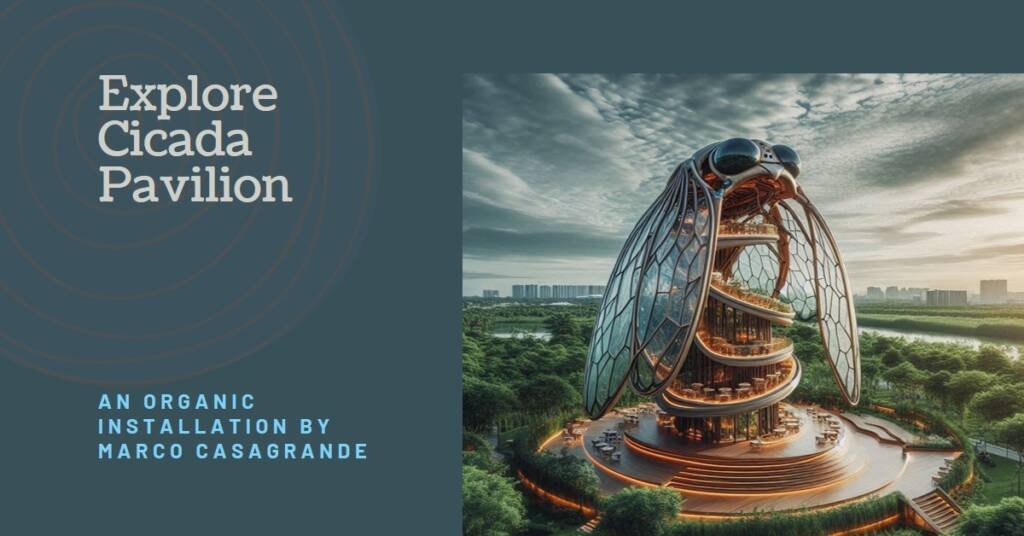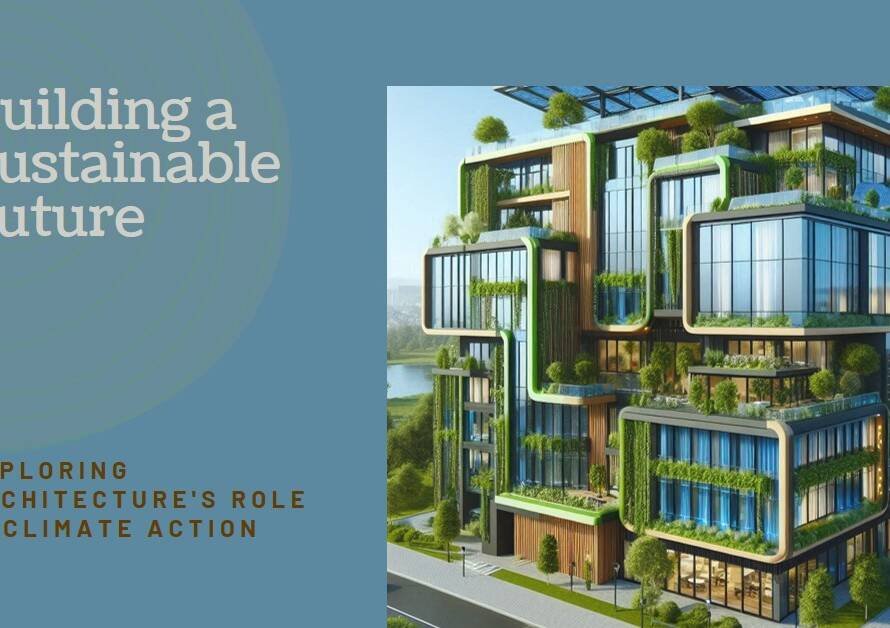
Table of Contents
- Introduction to Marco Casagrande
- Overview of the Cicada Pavilion
- Design Features of the Cicada Pavilion
- Sustainability and Environmental Impact
- Cultural and Artistic Influences
- Public Reception and Engagement
- Interactivity and Experience
- Lessons from the Cicada Pavilion
- Future Projects of Marco Casagrande
Introduction to Marco Casagrande
Marco Casagrande is a renowned architect and designer whose work is deeply rooted in the principles of sustainability and the organic interplay between natural and built environments. Based in Finland, Casagrande has gained international acclaim for his innovative approach, which often employs natural materials and prioritizes ecological consciousness in his designs. His architectural philosophy is influenced by the core belief that architecture should serve not only human needs but also the broader ecological context in which it exists.
Casagrande’s work consistently explores the relationship between nature and architecture, resulting in spaces that are both functional and harmonious with their surroundings. He views architecture as an opportunity to create a dialogue between the human experience and the natural world, placing emphasis on the importance of integrating the two. This perspective informates his approach to design, encouraging the use of locally sourced materials and techniques that minimize environmental impact.
In addition to his architectural endeavors, Marco Casagrande’s ethos is reflected in his contributions to public discussions on sustainability and ecological urbanism. He advocates for a reconnection with nature through architecture, encouraging fellow architects and designers to adopt a holistic approach that considers long-term environmental implications. His projects often exemplify this vision, showcasing how thoughtful design can facilitate not only the aesthetic appeal but also ecological well-being.
Overall, Marco Casagrande stands out as a pivotal figure in contemporary architecture, promoting a sustainable future through the lens of organic forms and natural materials. His work serves as an inspiring example for architects and designers seeking to create a symbiotic relationship between the built environment and the natural world.
Overview of the Cicada Pavilion
The Cicada Pavilion, a remarkable installation designed by architect Marco Casagrande, is a striking example of organic architecture that seamlessly harmonizes with its natural surroundings. Situated in the heart of the beautiful environment of the Finnish city of Kauttilan, this pavilion serves not only as an artistic endeavor but also as a space dedicated to promoting environmental awareness. The unique structure is inspired by the cicada, a creature typified by its resilient adaptation to shifting ecosystems, thus making it an apt symbol for sustainability.
The design of the Cicada Pavilion reflects Casagrande’s philosophy of architecture, which emphasizes a close relationship between built environments and nature. By utilizing natural materials and forms that mimic organic shapes, the pavilion immerses visitors in a contemplative space that encourages reflection on humanity’s connection to the environment. The intentions behind its creation extend beyond mere aesthetics; the pavilion aims to inspire visitors and the broader community to engage in active dialogues about ecological balance and sustainability practices.
Within the context of Marco Casagrande’s broader body of work, the Cicada Pavilion stands out as an embodiment of his ideals regarding the integration of architecture with its ecological context. This installation illustrates his commitment to creating spaces that not only respect their surroundings but also provoke thought and inspire action regarding environmental challenges. The pavilion, therefore, is not just a physical structure but a beacon of hope that invites visitors to cherish and protect the natural world. Ultimately, the Cicada Pavilion exemplifies how architecture can serve as a catalyst for environmental education and sustainability awareness within our communities.
Design Features of the Cicada Pavilion
The Cicada Pavilion, designed by Marco Casagrande, stands as a testament to the harmonious integration of architecture and nature. Central to its aesthetic appeal are the organic shapes that characterize its structure. Inspired by the natural forms found in the surrounding environment, these fluid shapes mimic the contours of cicadas in their eleventh hour of metamorphosis. Such design elements not only evoke a sense of whimsy but also allow the pavilion to seamlessly blend into the landscape, creating an immersive experience for its visitors.
Moreover, the use of natural materials plays a crucial role in the design of the Cicada Pavilion. Casagrande employs locally sourced wood, stone, and earth, which contribute to a minimal environmental footprint. These materials are not only sustainable but also facilitate a dialogue between the pavilion and its environment. The colors and textures of these materials reflect those of the landscape, enhancing the visitor’s connection to nature. Additionally, this choice of materials underscores Casagrande’s commitment to eco-friendly practices, further emphasizing the relationship between architecture and the natural world.
Sustainable building practices are a cornerstone of the Cicada Pavilion’s design. The structure incorporates passive design strategies that take advantage of natural light, airflow, and thermal mass. This not only reduces energy consumption but also promotes a healthy indoor environment. For example, large openings and strategically placed skylights allow sunlight to permeate the space, creating an inviting atmosphere while minimizing reliance on artificial lighting. Additionally, rainwater harvesting systems are integrated into the pavilion’s design, showcasing a forward-thinking approach to resource management.
Through the thoughtful incorporation of organic forms, natural materials, and sustainable practices, the Cicada Pavilion exemplifies Marco Casagrande’s ethos of blending architecture with nature, resulting in a space that is both aesthetically pleasing and environmentally responsible.
Sustainability and Environmental Impact
The Cicada Pavilion, designed by Marco Casagrande, exemplifies a commitment to sustainability, emphasizing the integration of environmentally conscious practices throughout its construction and design processes. The pavilion utilizes locally sourced materials, minimizing the carbon footprint associated with transportation. This choice not only supports the regional economy but also reduces the environmental impact typically associated with traditional construction methods.
In terms of construction techniques, the project employs a unique approach that embraces organic architecture. By incorporating natural elements into its design, such as biophilic materials and energy-efficient systems, the Cicada Pavilion enhances its sustainability profile. For instance, the structure features a rainwater harvesting system, which not only alleviates pressure on local water supplies but also demonstrates an innovative way to utilize natural resources effectively.
The pavilion’s design also prioritizes energy efficiency. By strategically orienting the structure to maximize sunlight exposure while mitigating heat gain, it reduces the reliance on artificial heating and cooling systems. Furthermore, the inclusion of green roofs and living walls promotes biodiversity and aids in the insulation of the building, ultimately contributing to a lower energy consumption rate over its lifecycle.
The implications of such sustainable architecture are profound. As contemporary design continues to evolve, projects like the Cicada Pavilion serve as a model for integrating ecological considerations into the built environment. They illustrate that architecture can coexist harmoniously with nature, fostering a symbiotic relationship between human structures and the ecosystems surrounding them. By championing sustainable practices, Casagrande’s project inspires future architects to pursue environmentally responsible methods, paving the way for a greener architectural landscape in the years to come.
Cultural and Artistic Influences
The Cicada Pavilion, designed by Marco Casagrande, is a testament to the interplay of cultural heritage and contemporary artistic expression. This installation reflects a rich tapestry of local traditions that have significantly influenced its design. Casagrande draws inspiration from the indigenous architecture and the environmental context of the region, integrating these elements to create a space that resonates with its surroundings. The pavilion’s organic structure mimics natural forms, echoing the myriad shades of nature that inhabit the landscape, thereby establishing a dialogue between human creativity and the environment.
Furthermore, the historical context plays a pivotal role in shaping the Pavilion’s aesthetic. The region’s history, marked by a blend of various cultural influences, is embedded in the structural elements and spatial organization of the installation. Each design choice honors the past while fostering an appreciation for the future, creating a bridge between generations. The decision to utilize natural materials, such as wood and bamboo, not only enhances sustainability but also reflects traditional craftsmanship, reinforcing the importance of local artisanship in contemporary architecture.
Alongside these influences, Casagrande integrates contemporary art into the Cicada Pavilion, highlighting the importance of artistic innovation. The installation serves as a venue for rotating exhibits that showcase local artists, thereby continually enriching its cultural significance. By inviting contemporary artistic expressions into the space, the Pavilion becomes a dynamic entity, promoting dialogue among diverse art forms and communities. This fusion of local tradition, historical resonance, and contemporary art form the essence of the Cicada Pavilion, establishing it as a vital cultural landmark that speaks to both the present and the past.
Public Reception and Engagement
The Cicada Pavilion, designed by architect Marco Casagrande, has elicited a largely positive public response since its inception. Visitors have expressed admiration for its unique organic design, which seamlessly integrates with the surrounding environment. This innovative installation has garnered significant media coverage, particularly highlighting its sustainable ethos and architectural ingenuity. Many articles and features have praised the pavilion not only for its aesthetic appeal but also for fostering a dialogue about modern architecture and ecology.
Visitor feedback indicates that the Cicada Pavilion serves multiple purposes, functioning as both a contemplative space and a vibrant venue for community events. Comments from attendees reflect a growing appreciation for the pavilion as a communal hub where individuals can gather for cultural activities, workshops, and exhibitions. Such events have encouraged local artists and performers to engage with the space, thereby enriching the cultural fabric of the community. Reports have suggested that the pavilion has become a focal point for artistic expression and public interaction, supporting the idea of architecture as a living art form.
Interactivity and Experience
The Cicada Pavilion, designed by Marco Casagrande, stands as a testament to the harmonious integration of architecture and nature, offering visitors a multifaceted interactive experience. One of the pavilion’s remarkable features is its ability to engage multiple senses, encouraging exploration that transcends traditional architectural boundaries. Visitors are invited to touch, hear, and see, as the design elements foster a tactile and auditory connection with both the structure and the surrounding environment.
The use of organic materials and natural forms in the pavilion’s construction creates a seamless dialogue with the landscape. Visitors can engage directly with textured surfaces that mimic the sensations of the natural world, encouraging them to appreciate the intricacies of their surroundings. For instance, the rhythmic patterns of the pavilion’s wooden façade invite tactile interaction, while the varying sunlight filtering through its openings creates a dynamic play of light and shadow that captivates the gaze.
Moreover, the outdoor areas integrated within the Cicada Pavilion further enhance the visitor experience, promoting a deeper connection with nature. Terraced gardens and open spaces provide opportunities for contemplation and social interaction, allowing visitors to gather, relax, and engage in recreational activities. The spatial arrangement encourages movement, leading guests on a journey through different experiences, from the intimate settings under the canopy to broader vistas that open towards the horizon.
In crafting the Cicada Pavilion, Marco Casagrande has focused not just on visual appeal but also on creating an environment that stimulates exploration and self-discovery. The interactive elements, along with the natural beauty of the setting, allow visitors to forge a personal connection with the space, embodying the philosophy of blending architecture with the natural environment. This innovative approach not only enriches the experience but also underscores the potential of contemporary design to serve as an engaging platform for visitors to connect with both art and nature.
Lessons from the Cicada Pavilion
The Cicada Pavilion, conceptualized by architect Marco Casagrande, serves as a vital case study in modern architectural practices that emphasize sustainability and organic design. One of the foremost lessons drawn from this impressive installation is the significance of integrating natural elements into urban environments. Casagrande’s design demonstrates how structures can coexist harmoniously with their surroundings, blurring the lines between man-made and natural landscapes. This approach encourages architects to rethink traditional building materials and methods, promoting a shift towards more organic, locally sourced materials that minimize environmental impact.
Another critical takeaway from the Cicada Pavilion is its emphasis on functionality and adaptability in design. The pavilion exemplifies how spaces can be versatile, serving multiple purposes throughout the day. This flexibility is essential in contemporary architecture, particularly in urban settings where space is at a premium. By prioritizing multifunctional spaces, architects can create environments that respond to the dynamic needs of communities, promoting interaction and engagement among users.
Furthermore, the pavilion illustrates the importance of designing for sustainability without compromising aesthetics. Its organic form and use of natural materials aesthetically appeal while serving as functional shelters. This underscores the concept that sustainable architecture does not have to sacrifice beauty but can instead offer a fresh perspective on artistry in construction. As cities continue to expand and environmental challenges mount, the Cicada Pavilion stands as a beacon for architects and designers, showcasing that innovative practices can lead to viable solutions that harmonize with nature and the societal fabric.
Lastly, the pavilion encourages ongoing dialogue regarding architecture’s role in environmental stewardship. Each design decision taken within the pavilion fosters a heightened awareness of ecological responsibility, ultimately inspiring future projects to adopt similar philosophies. The Cicada Pavilion is not merely a structure; it serves as a transformative model for sustainable architecture in the 21st century.


Future Projects of Marco Casagrande
Marco Casagrande is renowned for his innovative approach to architecture, intertwining the natural environment with contemporary design. Building upon the principles demonstrated in the Cicada Pavilion, his forthcoming projects are designed to further challenge traditional architectural norms while emphasizing sustainability and ecological harmony. These initiatives showcase a continued commitment to creating spaces that respect and enhance their natural settings.
One such project is envisioned in the context of urban environments, where Casagrande aims to implement biophilic design strategies. This concept focuses on reconnecting people with nature, fostering a sense of belonging and well-being through architectural interventions. By integrating greenery, natural materials, and water features within city landscapes, he seeks to mitigate the adverse effects of urbanization while promoting biodiversity. These upcoming designs will highlight a seamless transition between built and natural environments, drawing inspiration from the successful elements seen in the Cicada Pavilion.
Moreover, Casagrande is also exploring the potential for modular architectural solutions. His future projects will likely incorporate sustainable building practices that utilize renewable resources and adaptable structures. This approach not only enhances the ecological efficiency of buildings but also allows for flexibility in their use, reflecting the ever-changing needs of communities. By focusing on minimal waste and resource management, these innovations align with his vision of a sustainable architectural future.
In addition, Casagrande’s engagement with community-centric development will become increasingly prominent. By involving local populations in the design process, he aims to foster a sense of ownership and responsibility toward the environment. Through interactive workshops and participatory design sessions, future projects are crafted to resonate with the cultural fabric of their surroundings, promoting social sustainability alongside environmental considerations.



